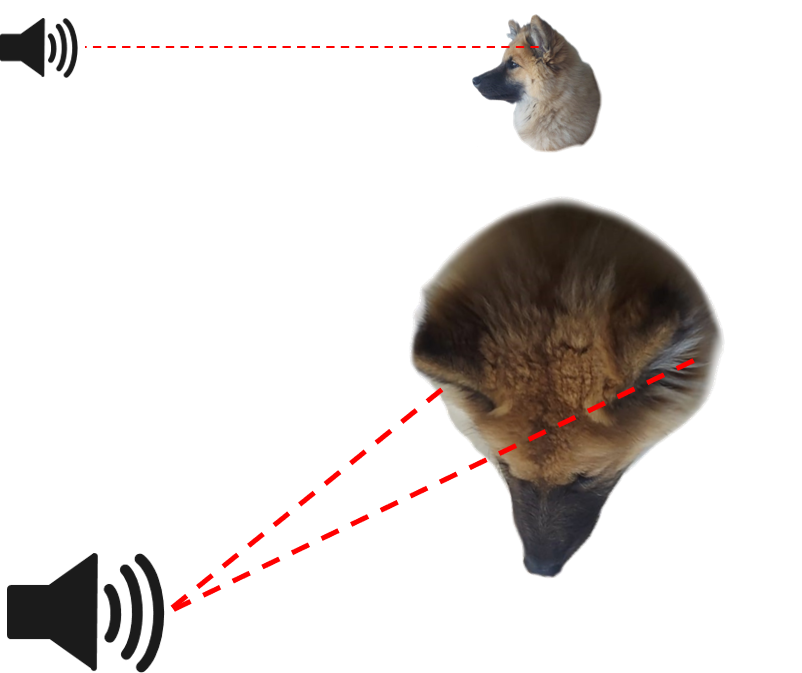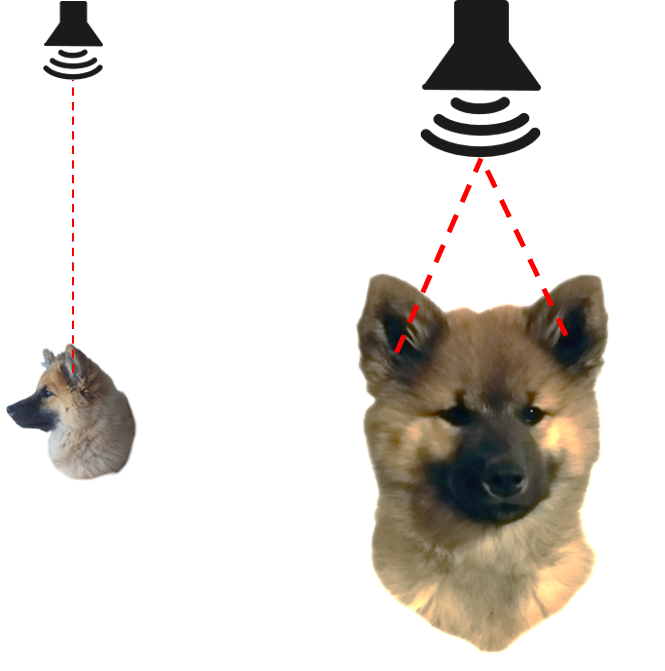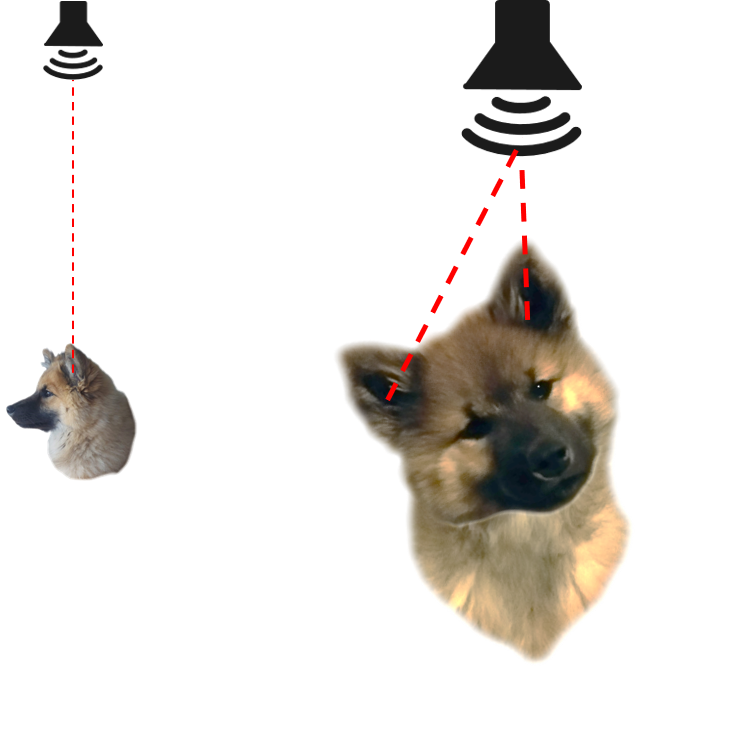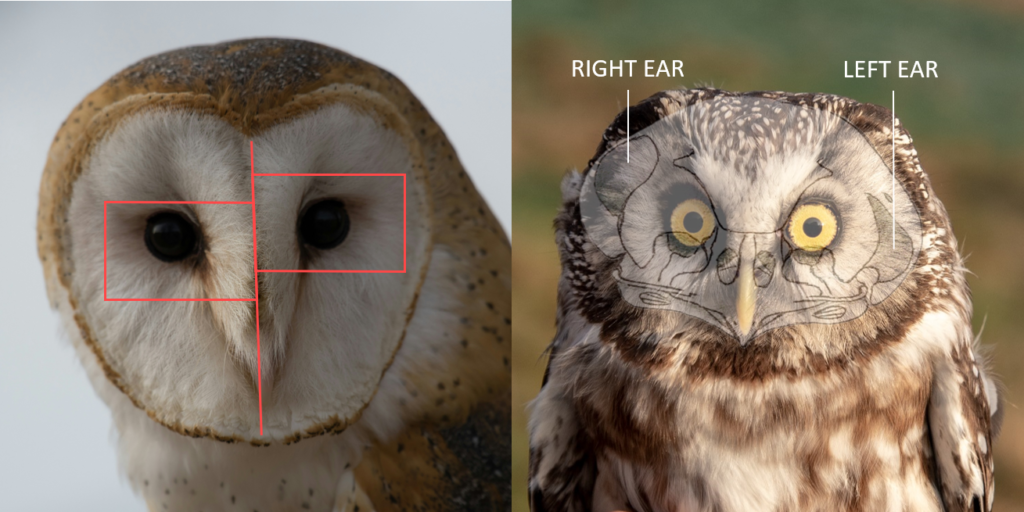Background
Aims
Hearing is extremely important for animals as a source of information about the surrounding environment, especially for prey/predator detection. Auditory cues can maximize the chances of survival/capture in low visibility condition (e.g. for nocturnal species).

Sound localization on the horizontal axis is fairly simple as one ear perceives the sound earlier than the other and at a higher intensity. Therefore, the animal can deduce the position of the sound origin.

Sound localization on the vertical axis is more difficult as both ears perceives the sound at the same time and intensity, making it difficult to localize its origin.

However, is the head gets tilted the ears are brought in an asymmetrical position and will perceive the sound at different time and intensity, making it easier to locate its origin.
Therefore, certain species have developed morphological and behavioural adaptations to overcome this challenge.
Owls
Certain owl species present asymmetrically positioned ears to precisely locate preys beneath them while flying in the dark (e.g. barn owl, boreal owl).

Right: Boreal owl (Aegolius funereus) skull asymmetry refarding ears. (Picture by Pietro Semprebon and skull drawing by Lisa Calearo).
Foxes
Foxes tilts their head to bring their ears in an asymmetrical position to locate more precisely preys hidden beneath the ground when hunting.

What about wolves and dogs?
wolves
Head tilting in wolves is unknown and it could seem useless for prey localization since they hunt big preys in pack. However, during dispersal, young individuals live temporarily alone and feed on small preys that hide underground, for which localization head tilting would be advantageous.

dogs
Dogs do head tilt but the triggers and function of this behaviour are still unknown.
It is known that dogs head tilt in response to known words and that humans find it extremely cute. Could it have had an evolutionary advantage? Other hypothesis are about sensory improvements:
- auditory, since the ears end up in an asymmetrical position which increase sound localization precision;
- visual, since the muzzle impediment is removed with the head rotation.

This study’s aim is to investigate the head tilting behaviour in the dog (Canis familiaris) and in its ancestor species the wolf (Canis lupus).
In particular this project aims to investigate:
- the presence of head tilting in wolves

Do they head tilt?
- the possible function of this behaviour in dogs
- Is is related to an auditory or a visual improvement? Therefore, does the sound source source position and visibility affects/triggers the behaviour?
- Does it have any correlation with any characteristic of the dog (e.g. sex, age, ear shape and muzzle lenght)?

Why do they head tilt?